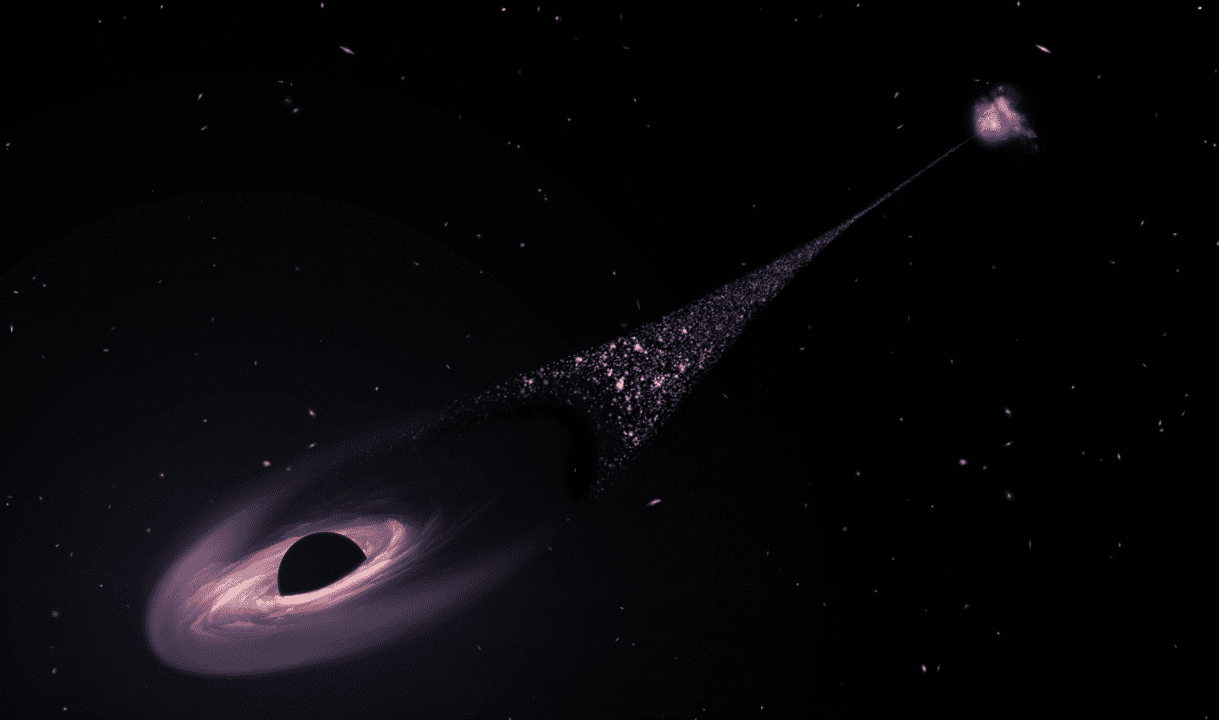The discovery of a long, thin stream of stars in old Hubble images created a buzz of excitement. The astronomers who found the unusual structure explain it as a supermassive black hole (SMBH) forced out of its galaxy through an encounter with two even larger black holes, and forming stars out of intergalactic gas in its wake. However, a different team now proposes that we might be seeing an unusual galaxy from an odd angle instead.
There’s no question that the object discovered by Pieter van Dokkum in the background of globular clusters he was studying is something very unusual. However, not all astronomers agree on the exact oddity we are observing. The original paper set out a scenario for a SMBH to be ejected from a galaxy merger at such speed stars would form behind it, even from the sparse gas between galaxies. However, for this to occur, a series of improbable or exceptional circumstances would need to be in place. In particular, the gas the black hole is passing through would need to be so close to forming stars that the passage of other large objects, such as a globular cluster, would have a similar effect. We haven’t seen this occurring elsewhere.
Having decided the original explanation is very unlikely, a team at the Instituto de Astrofica de Canarias, Spain sought an alternative. In a recent paper, they suggest we change our perspective and imagine we are seeing a galaxy edge-on, rather than stars angled toward us.
The galaxy would need to be a thin one, without a central bulge. While not as common as galaxies like our own, bulge-less galaxies exist in sufficient abundance that this part is not difficult to believe. Since galaxies are arranged randomly from our perspective, many happen to be edge-on to our line of sight. The galaxy would need to be unusually long for its mass and brightness, but not implausibly so, in the authors’ view.
To verify their case, Professor Jorge Almeida and co-authors looked at images of a galaxy, IC5249, that resembles their proposed scenario. IC5249 lacks a bulge and has a similar mass of stars to the newly discovered object and is seen from a similar angle. It’s also hundreds of times closer, so we can see it in much more detail.

This is how an artist imagined the object based on the original explanation by the discoverer and colleagues
Image Credit: NASA, ESA, Leah Hustak (STScI)
“When we analyzed the velocities of this distant structure of stars we realized that they were very similar to those obtained from the rotation of galaxies, so we decided to compare a much closer galaxy, and found that they are extraordinarily similar,” said co-author Dr Mirela Montes in a statement.
Although not as romantic as a fleeing black hole trailing stars, this scenario still makes the so-far unnamed object intriguing as it is unusually large for a galaxy we are seeing so far back in time.
Upcoming observations with the JWST and the Chandra X-Ray observatory should settle which explanation is right, but in the meantime Almeida is confident. “The motions, the size, and the quantity of stars fits what has been seen in galaxies within the local universe,” he said. “It’s a relief to have found the solution to this mystery, the new proposed scenario is much simpler. In one sense it is also a pity, because the existence of fleeing black holes is expected, and this could have been the first one to be observed.”
The work is published open access in the journal Astronomy and Astrophysics
Source Link: Suspected Runaway Supermassive Black Hole May Not Be What It Seems